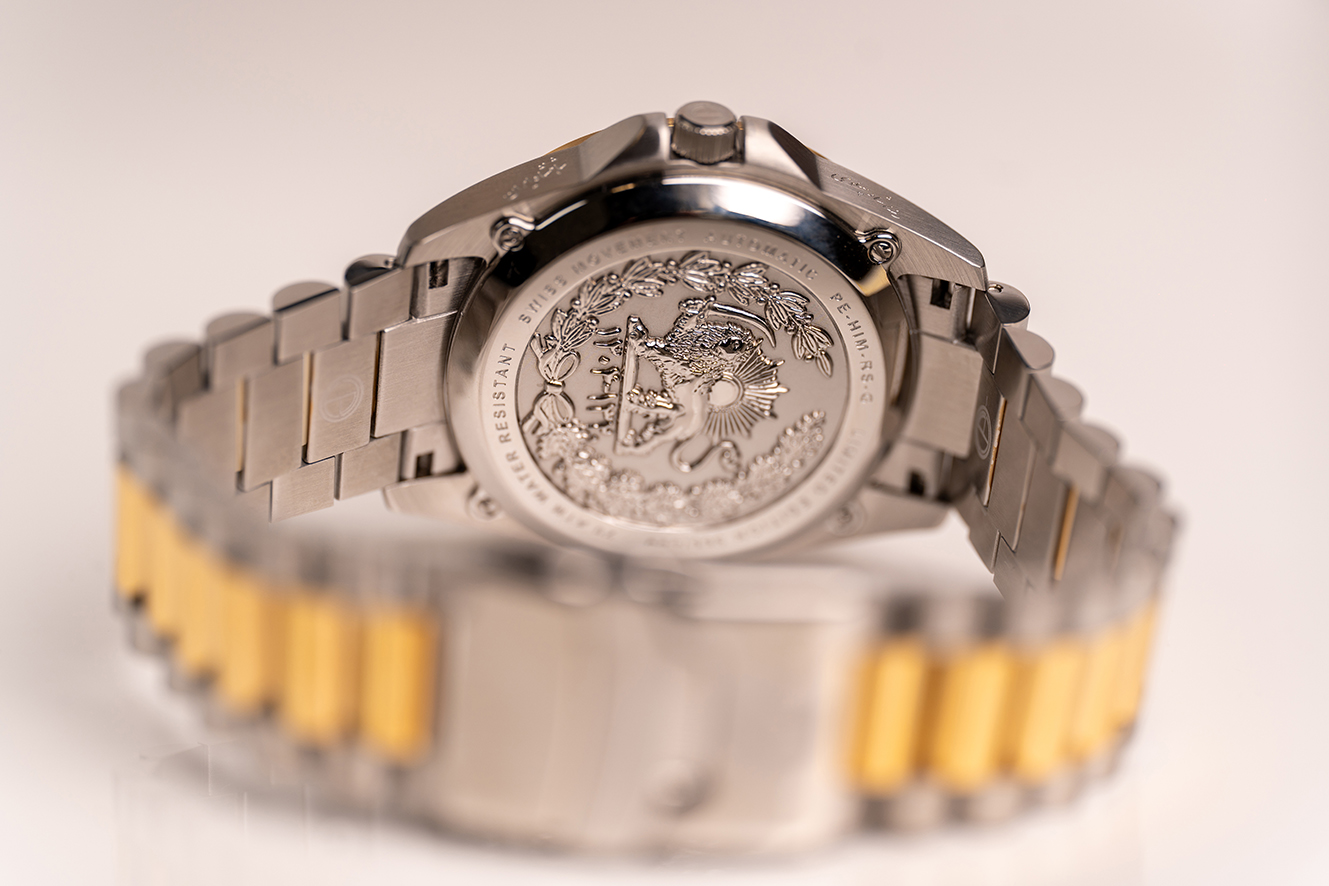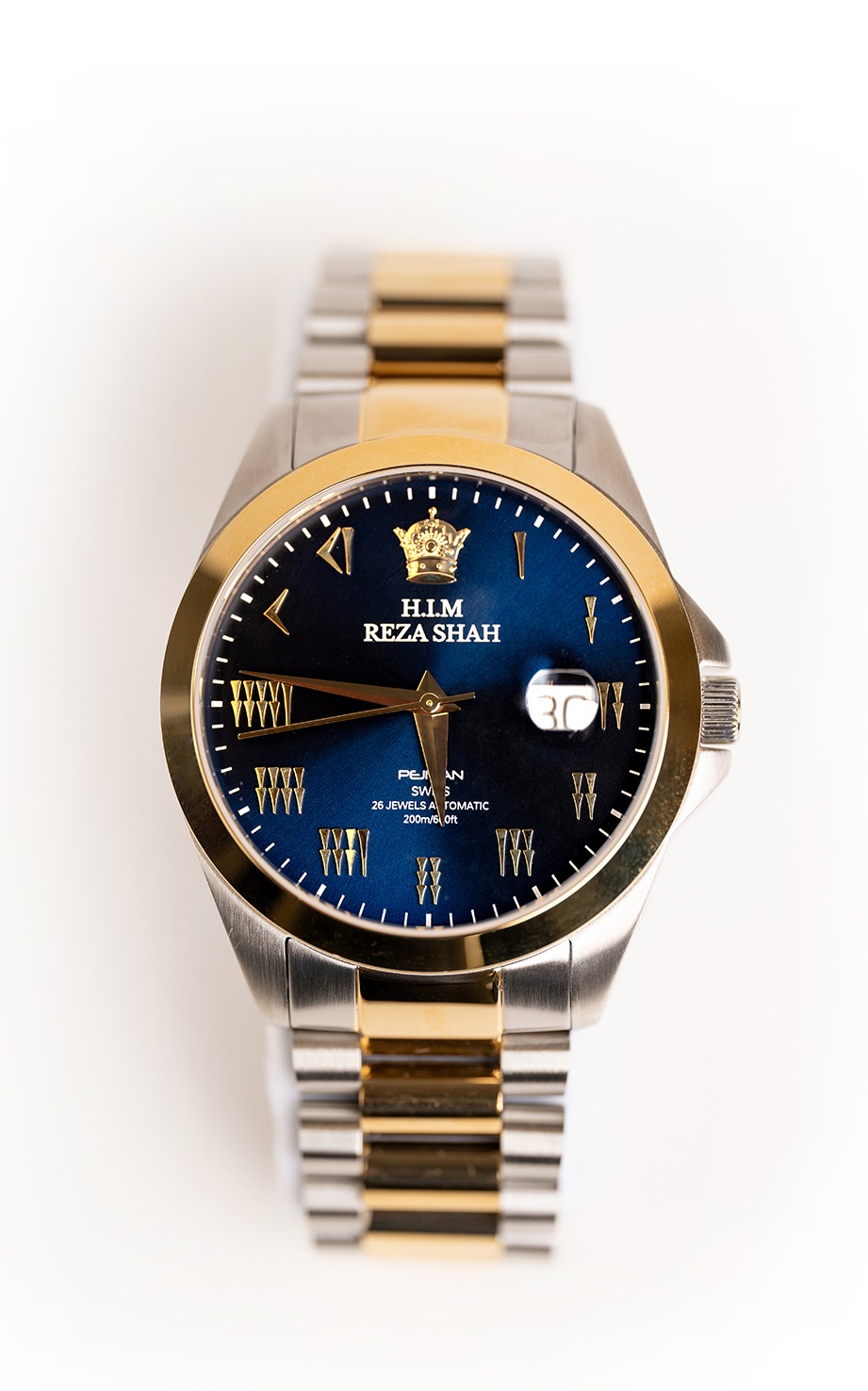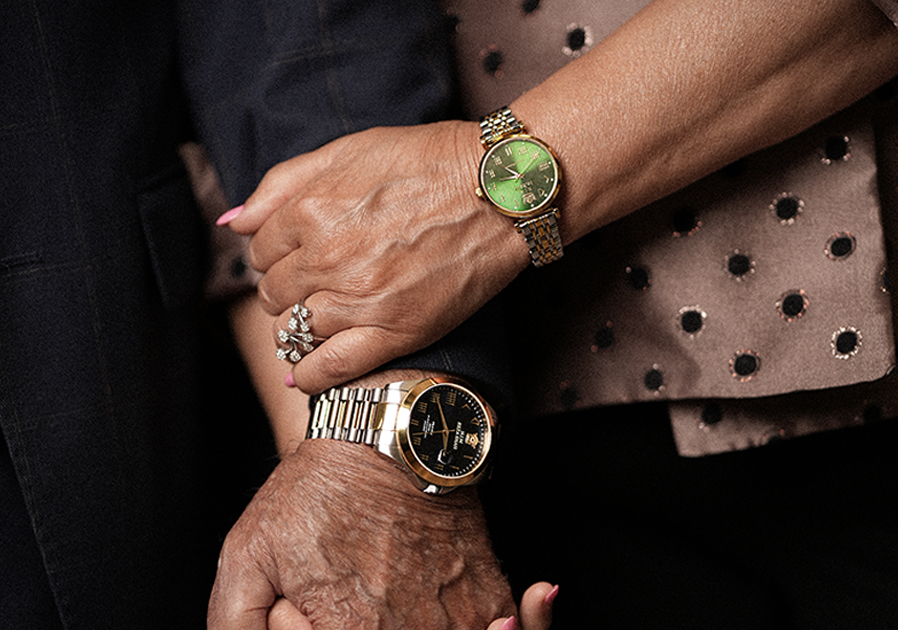In a world where the richness of history and culture can often be overlooked, it is crucial to recognize and honor those who have made significant contributions to preserving and advancing their heritage. The Royal Family of Iran, from its earliest generations to the present, has played a pivotal role in both modernizing society and safeguarding its valuable traditions.
Among these remarkable figures, Shahbanou Farah Pahlavi and Reza Shah the Great stand out for their profound impact on Iranian culture. Shahbanou Farah Pahlavi’s dedication to the arts and cultural preservation, combined with Reza Shah’s transformative efforts in developing Iran, set a powerful precedent for celebrating Persian heritage. Inspired by these influential leaders, Pejman Pirmoradi embarked on a journey to address the cultural neglect he perceived, creating unique timepieces to honor and bridge the gap in Iran’s rich legacy.

H.I.M REZA SHAH watch
Lion and Sun Emblem
The reverse side of many coins featured the traditional Lion and Sun emblem, a symbol of Iran that dates back centuries and represents strength, courage, and the connection between the monarchy and the divine.

The Journey.
Pejman Pirmoradi, an Iranian-American pharmaceutical scientist, was born and raised in Ghazvin, Iran. He earned a Doctor of Pharmacy (PharmD) degree from Melli University and, after immigrating to the United States, pursued advanced studies in pharmacotherapy and geriatric pharmacy.
The Void and the Vision.
Despite achieving notable success in his professional career, Pejman felt a profound void due to the lack of information, appreciation, and honoring of Iran’s rich culture. This sense of loss was both a personal and cultural responsibility, as he observed the fading recognition of his homeland’s history, influenced by neglect and purposeful distortion. Pejman was deeply troubled by the erasure of the contributions of past dynasties and individuals who had once made Iran a proud nation. Recognizing this cultural amnesia, he sought to preserve and celebrate Iran’s heritage, understanding its importance for national pride and continuity. Pejman aimed to address this gap, ensuring that the rich cultural tapestry of Iran would once again be recognized and cherished.
Defining Philosophies.
A pivotal moment in Pejman’s journey came in 2018 after he listened to inspirational speeches by Jim Rohn. These speeches were instrumental in shaping Pejman’s guiding philosophies, which have since directed his personal and professional endeavors.
The first philosophy is legacy. Pejman understood the profound significance of making a positive impact on the world. He realized that life is fleeting and that to leave a meaningful mark, he needed to actively contribute to somethsing greater than himself. This philosophy drove him to seek out ways to honor and preserve his heritage, ensuring that his actions would create a lasting impact. For Pejman, this meant dedicating himself to projects that would celebrate and revitalize Iranian culture, aiming to leave a legacy that future generations could appreciate and build upon.
The second philosophy is combating the disease of indifference. Pejman was deeply moved by the idea that indifference can be a significant barrier to personal and societal growth. He believed that by actively engaging in self-reflection and personal growth, individuals could overcome apathy and make meaningful contributions to the world. This philosophy motivated Pejman to challenge the status quo and to actively address the cultural neglect and distortion he saw in Iranian heritage. He sought to inspire others to care deeply about their own cultural legacies and to take action against the erosion of their historical identities.
The third philosophy is overcoming the fear of regret. Pejman recognized that fear of failure or discomfort often prevents people from pursuing their true passions. For him, this meant confronting and overcoming his own fears about stepping out of his comfort zone. He understood that in order to showcase the richness of Persian history and culture, he had to be willing to take risks and face potential setbacks. This philosophy encouraged him to embark on projects that might seem challenging or unconventional but were essential for achieving his goal of cultural preservation and appreciation.
Together, these philosophies—legacy, combating indifference, and overcoming fear—provided Pejman with a clear direction and purpose. They guided him in his mission to bridge the cultural gap he felt, driving him to make impactful contributions and to inspire a renewed appreciation for Iran’s rich heritage.
The realization of this dream would not have been possible for him without the steadfast support of his wife, Hengameh Khosravi, throughout the entire process.
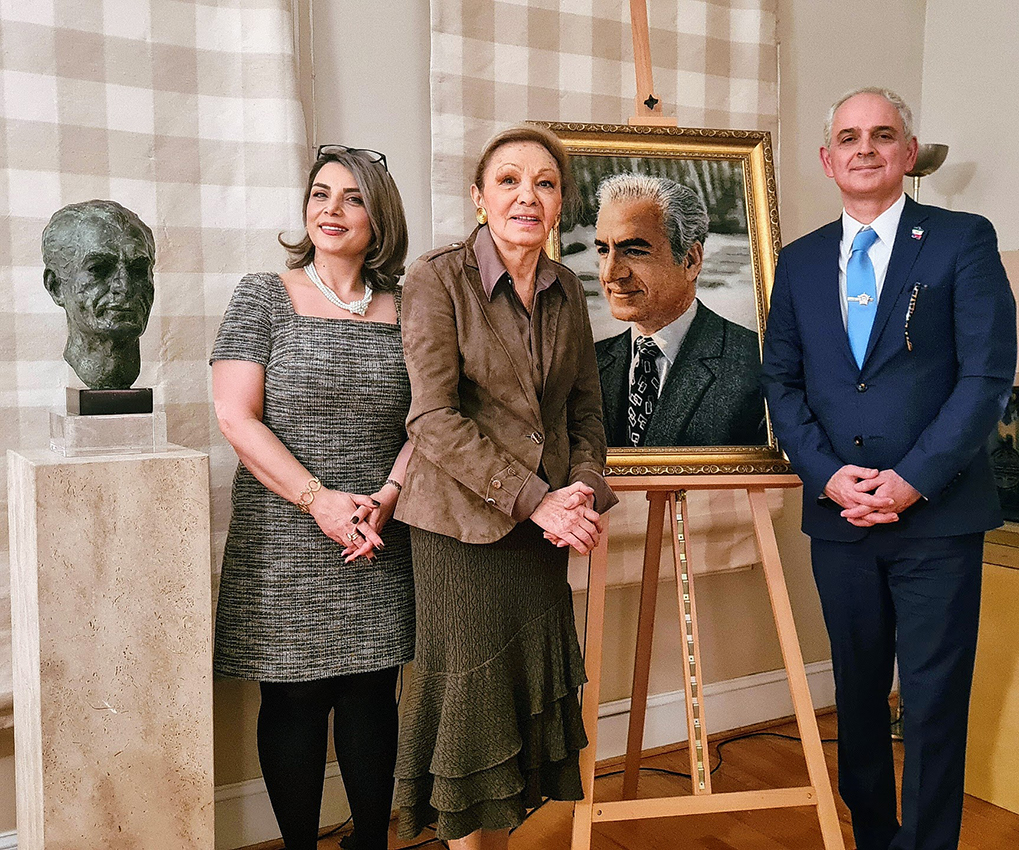
From lef to right: Hengameh Khosravi, Shahbanou Farah Pahlavi (The Queen of Iran — Pahlavi Dynesty), Dr. Pejman Pirmoradi
Inspired by Shahbanou Farah Pahlavi.
Shahbanou Farah Pahlavi, the Empress of Iran, made significant contributions to Iranian art and culture. She founded the Tehran Museum of Contemporary Art and the Carpet Museum of Iran, supported cultural festivals, and was involved in the establishment of the National Iranian Radio and Television (NIRT). Her efforts to restore historical sites and support artists and education played a key role in modernizing and preserving Iranian culture.
The idea of creating watches was inspired by Shahbanou Farah Pahlavi. Her efforts to promote intercultural dialogue motivated Pejman to develop unique, limited-edition watches that celebrate ancient civilizations and contemporary history.
Crafting Timepieces with Historical Significance.
With a keen eye for design, Pejman began crafting timepieces that highlight major ancient civilizations and the Pahlavi Dynasty. The first watch in his collection, the H.I.M Farah, honors Shahbanou Farah Pahlavi. It features 12 round-cut diamonds, ancient Persian numerals, and motifs of Shahbanou’s crown and the Imperial Arms, symbolizing purity and divine grace. This first timepiece was granted to Shahbanou Farah Pahlavi herself.
Honoring Reza Shah the Great.
Reza Shah the Great, founder of the Pahlavi dynasty, made substantial contributions to Iran’s modernization in the early 20th century, from building extensive infrastructure to reforming education and industry. Pejman designed a second watch to honor Reza Shah the Great, featuring his crown, Old Persian numerals, and the lion and sun emblem. Available in six colors and 12 styles, this timepiece celebrates his legacy with elegance and historical significance.
A Beacon of Hope and Dedication.
In a world where history can easily fade into obscurity, Pejman Pirmoradi stands as a beacon of hope and dedication. His timepieces are not merely watches but are intricately crafted pieces of history, art, and culture. Through his work, Pejman invites us to celebrate and appreciate the timeless legacy of Persian heritage, ensuring that the beauty and richness of Iran’s cultural past remain alive and cherished.
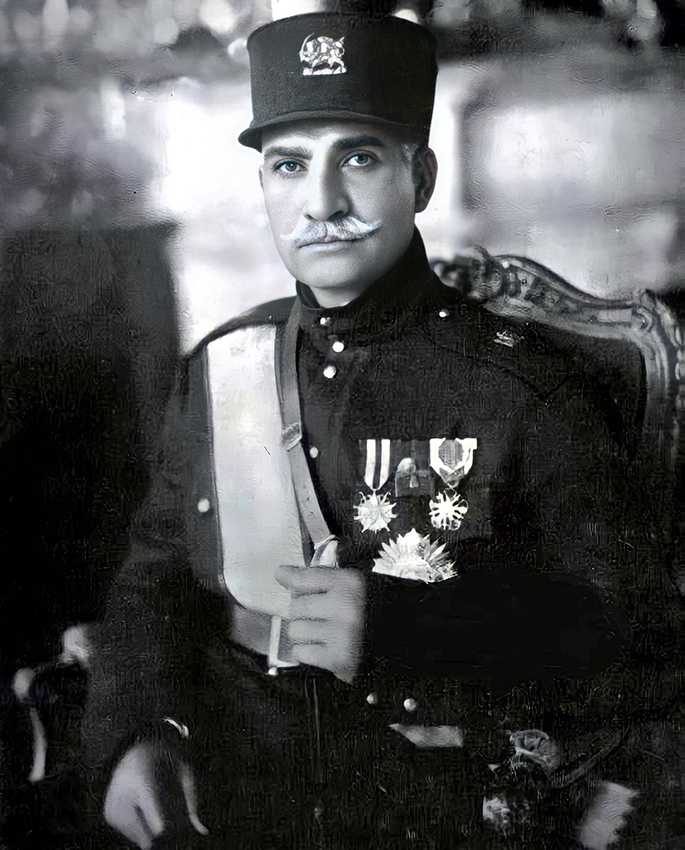
Reza Shah the Great – Founder of the Pahlavi Dynasty
Courtesy of farahpahlavi.org
H.I.M FARAH Specifications:
Cuneiform Numbers from Dariush the Great era
Case | 32 mm Surgical Grade Stainless Steel
Movement | SWISS 5 Jewels Quartz
Glass | Sapphire Crystal, Scratch Resistant
Water Resistance | 5 ATM
Band | Two-Tone Stainless Steel or Leather
Strap Width | 14 mm
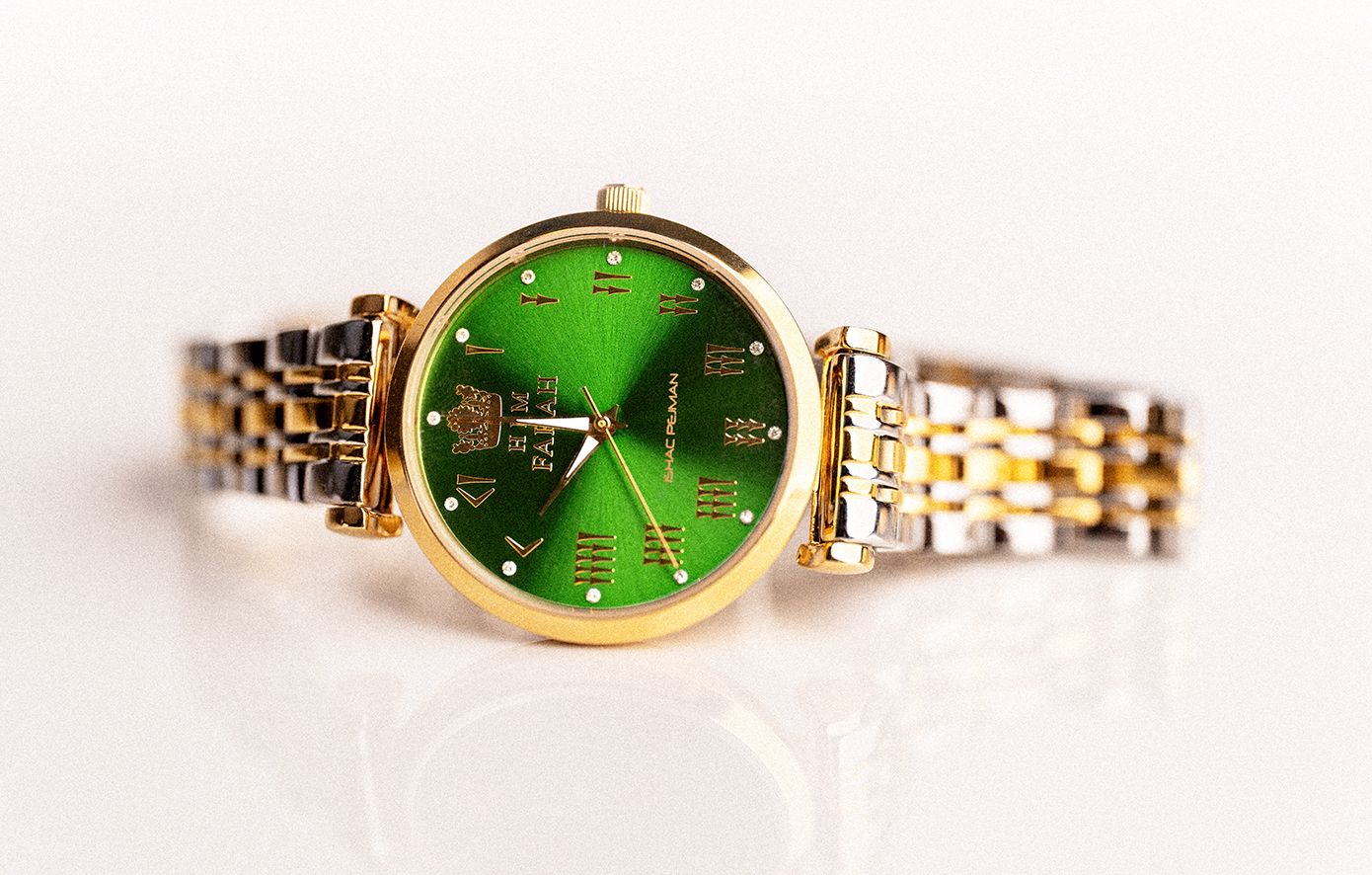
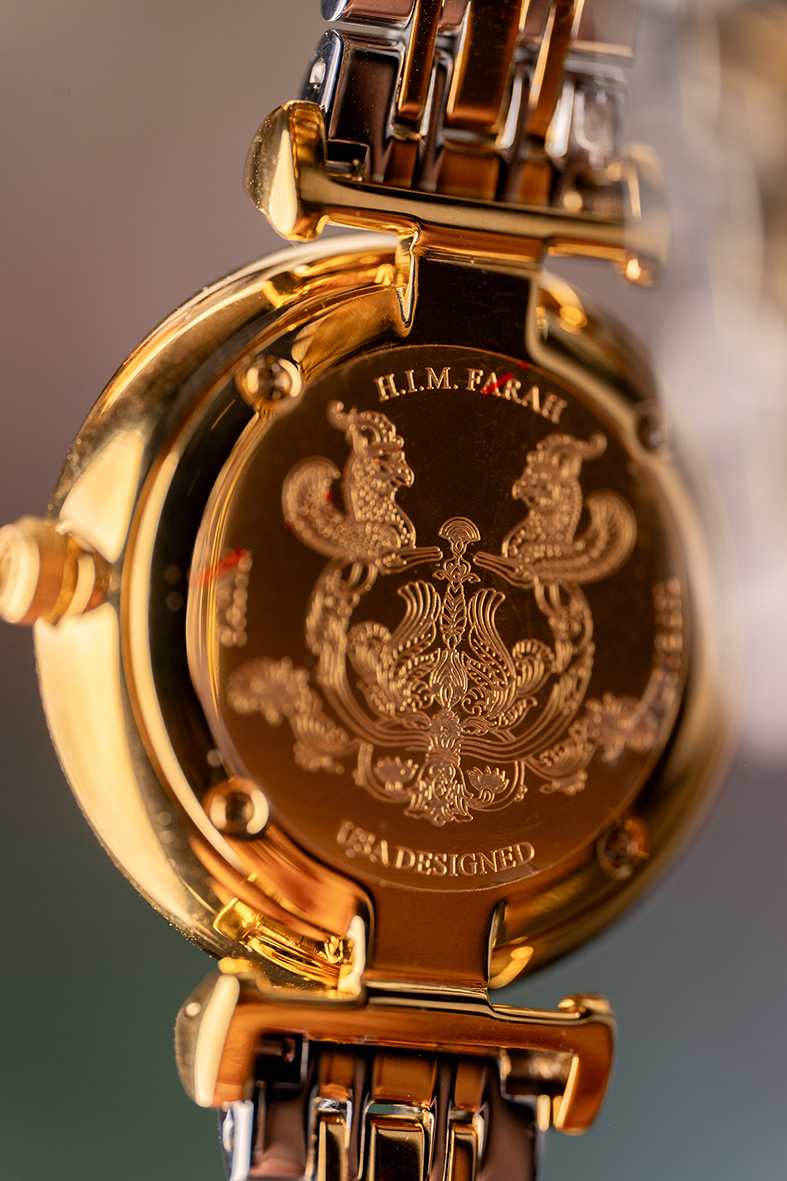
H.I.M REZA SHAH Specifications:
Cuneiform numbers form Dariush the Great era
Case | 42 mm Surgical Grade Stainless Steel
Movement | SWISS 26 Jewels Automatic
Glass | Sapphire Crystal, Scratch Resistant
Water Resistance | 20 ATM (200 Meter)
Band | Two-Tone or Silver Stainless Steel
Strap Width | 22 mm
